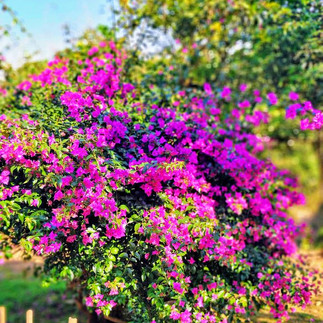Flanked by the mighty Brahmaputra on one side and the Eastern Himalayas on the other, Kaziranga National Park is India’s great conservation success story. Often called the Serengeti of the east for the budget traveller, Kaziranga is a biodiversity hotspot. It was declared a UNESCO World Heritage Site in 1985. Being a UNESCO World Heritage Site, the Kaziranga National Park welcomes millions of domestic and international visitors annually. One of the main attractions is that the national park is home to over 2,400 magnificent one-horned rhinos and boasts two-thirds of the world’s total population of this species. In addition to this, the Kaziranga National Park has designated the area a Tiger Reserve and today a wide-ranging and successful conservation program exists to protect both these and many other unique species of wildlife.

John Muir once said – “The clearest way into the Universe is through a forest wilderness.”

The mighty river Brahmaputra flows through the park and the mountain range of Karbi Anglong adorns its backdrop. The national park is divided into four zones- Mihimukh in central range at Kohora, Bagori in western range at Bagori, Agoratoli in eastern range at Agoratoli, and Ghorakati in Budhapahar at Ghorakati. Each of these four zones are home to varied species of flora and fauna and each is worth a visit in its own right. The park is a vast expanse of tall elephant grass, marshland and dense tropical moist broadleaf forests, crisscrossed by four major rivers, including the Brahmaputra.
The BIG FIVE at Kaziranga –
a) The Great Indian One Horned Rhinoceros
b) Asiatic Wild Buffalo
c) Asian Elephant
d) The Tiger
e) Swamp Deer
Apart from a variety of mammals that can be spotted at Kaziranga, there are also 478 species of birds (both migratory and resident).
How to book the Jungle Safari:

Kaziranga has two options for Safari a) Elephant Safari b) Jeep Safari Kaziranga has three major zones for both the Safari’s a) Kohora (central) zone b) Bagori (western) zone c) Agaratoli Depending on the range you choose the prices of the Jeep Safari would vary. The Elephant Safari for Indian Nationals is only available at the Western range, for foreign nationals the Central range. The timings of the Jeep Safari are: Forenoon 7:30 am to 9:30 am and Afternoon 2 pm to 4 pm. Timings of the Elephant safari are: 1st Ride – 5 am to 6 am and 2nd Ride – 6 am to 7 am. (Note: The seats of the elephant safari are limited). For booking your safari, check out the KazirangaNationalPark-india.com. Prices, safari details and more information about the zones can be easily found at this link.
Kaziranga is a safe haven for the great Indian one-horned rhinoceros. Besides these majestic animals, a healthy amount of tigers also thrives inside the park’s boundaries. Though tiger sighting is very rare, we did manage to spot the fresh paw prints of the tiger during our safari. Bird watchers are also rewarded with over 100 species of several local and migratory birds making their pit stop inside the national park.

This is the only place in India where you can spot the mother and baby rhinos playing in mud puddles, Kaziranga National Park is a nature lovers dream. The abundance and diversity of flora and fauna are truly magnificent. Backpackers making their way to the national park never leave dispirited as the vistas on offer are diverse, ranging from a large number of lakes, ponds, marshlands, streams & grasslands to dense tropical forests. Traveller’s getting to Kaziranga can plan a 2 or 3-day trip as there is so much to explore inside the park.
Where to stay:
There are a lot of resorts and budget hotels to choose from when you are planning your trip to Kaziranga. Being a popular tourist destination, there are an abundance of accommodation including hotels and resorts in and around Kaziranga The type of accommodation depends on your budget and the area you choose. We had chosen the Hills N Lakes Resort, located at a stone's throw from the Bagori zone during our day trip!
Best time to visit Kaziranga:
The best time to visit Kaziranga is during the months of November to March. But as per our Jeep Safari driver, if you want to see one horned rhinos in full glory then March is the best time. This is majorly due to the tall elephant grass drying down and it becoming easier to spot animals.
Handy Travel Tips:
Avoid visiting during winter as the dense fog may hinder spotting the wildlife. March-April is the best month as nature changes its colours and you can easily spot the animals.
The park remains open for safari between 05:30 AM to 04:30 PM and you are required to arrive at least half an hour prior to the scheduled safari time, if the jeep is not coming to pick you up from the hotel.
Carry binoculars to enhance your wildlife adventure experience.
Wear comfortable and light clothes. Avoid bright colours.
You will be denied entry if you carry arms, weapons, or sharp objects.
Do not touch or harm the flora and fauna.
Put your phone on silent and maintain silence when near an animal. You may not want to startle them.
Keeping aside the incredible wildlife, the Kaziranga National Park has a lot to offer. Exploring the other attractions requires time and that is what will bring us back to this magical place again in the future.
For all budding travel enthusiasts out there, if you need our travel experiences straight into your inbox, do visit our pageand subscribe to us. You can also follow us on Instagram and Facebook to get the weekly dose of travel experiences!!
*FIN*











































Comments